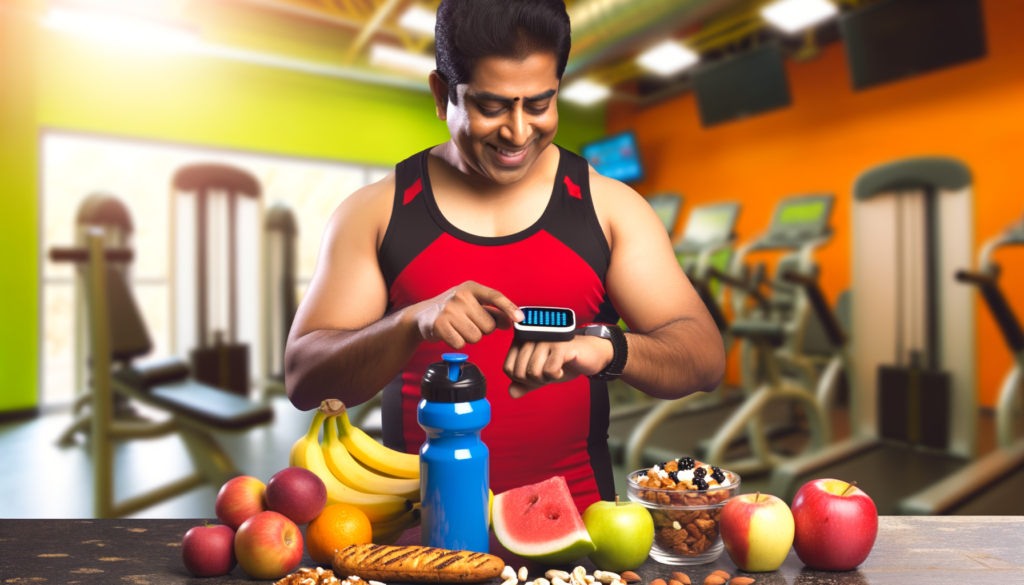Optimizing Performance Through Calorie Tracking in Combat Sports
When it comes to combat sports, nutrition plays a crucial role in optimizing performance, managing weight, and ensuring athletes are in the best possible condition for competition. Here’s a comprehensive guide on how calorie tracking can be a game-changer for weight class athletes.
Understanding Caloric Needs
Athletes involved in combat sports, such as MMA, boxing, and wrestling, have high energy demands due to the intense nature of their training and competitions. The caloric needs for these athletes can range from 40–70 kcal/kg/day, depending on the intensity and frequency of their training sessions.
For instance, a fighter training with high intensity may require an energy intake that exceeds these levels. It is essential to calculate the Resting Metabolic Rate (RMR) to understand the baseline energy needs. RMR can be measured using metabolic testing equipment or estimated using equations like the Cunningham or Mifflin-St Jeor equations.
Energy Balance and Weight Management
Achieving and maintaining an optimal weight is a delicate balance between energy intake and expenditure. Athletes need to ensure they are consuming enough calories to support their training while avoiding excessive weight gain. The energy balance equation—total energy intake equals total energy expenditure—serves as a foundation, but it is dynamic and changes over time, especially during weight loss programs.
Calorie Deficit for Weight Loss
To lose weight, athletes must create a calorie deficit by consuming fewer calories than they burn. However, this deficit should be gradual to avoid muscle loss and performance decline. A daily calorie deficit of 300-500 calories is often recommended, coupled with adequate protein intake to preserve muscle mass.
Protein Intake
Protein is a critical macronutrient for athletes, especially those in combat sports. The recommended protein intake for athletes is higher than for non-athletes, ranging from 1.2 to 2.7 grams per kilogram of body weight, depending on whether they are in a weight reduction phase. Consuming essential amino acids, particularly leucine, after exercise can stimulate muscle protein synthesis and support muscle recovery.
Carbohydrate and Fat Intake
Carbohydrates are the primary energy source for high-intensity sports like combat sports. Athletes may need to consume 10-12 grams of carbohydrates per kilogram of body weight daily to replenish glycogen stores and support endurance. Carbohydrate intake before training can improve performance by increasing muscle and liver glycogen levels.
Fats, while not as immediate an energy source as carbohydrates, are essential for long-term energy availability. During prolonged training, fats become a significant energy source as carbohydrate stores are depleted. Ensuring adequate fat intake helps in maintaining energy levels and supporting overall health.
Nutrient Timing and Recovery
Nutrient timing is crucial for optimizing sports performance. Consuming carbohydrates and protein at the right times can enhance muscle protein synthesis, recovery, and tissue repair. For example, ingesting a meal with carbohydrates and protein 3 hours before training can improve endurance and performance.
Post-workout nutrition is also vital. Consuming 20-40 grams of protein or essential amino acids after exercise can stimulate muscle protein synthesis and aid in recovery. This strategic intake helps in maintaining muscle mass and improving body composition.
Weight Cutting Strategies
Weight cutting is a common practice in combat sports to meet weight class requirements. However, it must be done safely to avoid negative impacts on performance and health.
Gradual Weight Loss
Gradual weight loss over a longer period is safer and more effective than drastic last-minute cuts. Athletes should aim to start their weight cut 6-8 weeks before the competition, targeting a moderate fat loss of about 0.5 kg (1 lb) per week. This approach helps in preserving muscle mass and maintaining performance levels.
Safe Weight Cutting Methods
Safe weight cutting involves strategies such as minimal dehydration, glycogen depletion, and reducing gut volume. These methods should be used under professional guidance to avoid risks like dehydration and overheating. Tools like the Fight Weight Class Calculator can help athletes determine their projected weigh-in weight and body fat percentage, ensuring they cut weight safely without losing muscle mass.
Training and Recovery While Cutting Weight
During the weight-cutting phase, it is essential to maintain strength training and incorporate cardiovascular workouts. High-intensity interval training (HIIT) can be particularly effective for fat loss while preserving muscle mass. However, the volume and intensity of workouts should be adjusted to avoid excessive fatigue and muscle loss.
Sauna sessions and sweat-inducing workouts can help shed excess water weight temporarily but should be used sparingly and under professional supervision. In the final week before the weigh-in, athletes should taper their workouts and fine-tune their nutrition to ensure they hit their target weight without compromising performance.
Long-Term Weight Management
Maintaining optimal fight weight is not just about cutting weight for a single competition but also about long-term management. Athletes should avoid drastic weight cuts between fights and maintain a weight closer to their target class. Regular body composition assessments and consultations with sports nutritionists can help in developing a long-term nutrition and training plan that aligns with competitive goals.
Case Studies and Real-World Examples
Elite Fighters’ Nutrition Plans
Elite fighters often work with sports nutritionists to develop customized nutrition plans. For example, a fighter aiming to compete in a lower weight class might start their weight cut several weeks in advance, gradually reducing their calorie intake while ensuring adequate protein and carbohydrate consumption. This approach helps in preserving muscle mass and maintaining performance levels.
Using Calorie Tracking Tools
Tools like the Calorie Calculator Cloud can be invaluable for athletes in tracking their daily calorie intake and ensuring they meet their nutritional needs. By inputting specific dietary requirements and training data, athletes can get personalized calorie recommendations that support their performance and weight management goals.
Conclusion and Next Steps
Calorie tracking is a critical component of nutrition planning for combat sports athletes. By understanding their caloric needs, managing energy balance, and using safe weight cutting strategies, athletes can optimize their performance and achieve their competitive goals.
For those looking to implement these strategies, here are some next steps:
- Consult with a sports nutritionist or dietitian to develop a personalized nutrition plan.
- Use tools like the Calorie Calculator Plans to track and manage your calorie intake.
- Incorporate nutrient timing and recovery strategies into your training routine.
- Focus on gradual weight loss and safe weight cutting methods to avoid negative impacts on performance and health.
By taking these steps, combat sports athletes can ensure they are fueling their bodies optimally for peak performance and long-term success.








